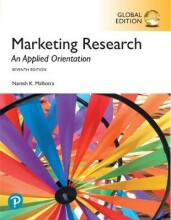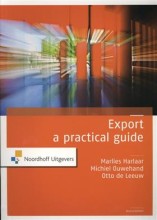Organization-environment relations
42 important questions on Organization-environment relations
What is according to modernists an organization?
A bounded entity and its behavior is influenced by other bounded entities in its environment.
How would you define an organizational environment?
The external entities and forces which influence the focal organisation's internal operations
Explain the economic exchange model
The economic exchange model describes the exchanges an organization makes with its environment to fuction and survive, without the exchange the organization fails.
The environment both provides the inputs for the organization's transformation process and absorbs the organization's outputs of goods/services.
This absorption generates revenue streams that the organization uses to acquire more inputs. The revenue stream must be sufficient to produce profit
- Higher grades + faster learning
- Never study anything twice
- 100% sure, 100% understanding
Explain the concept of corporate responsibility/ corporate citizenship
Explain the concept of fiduciary responsibility
The legal obligation to protect stockholders' investments. However, this is only a portion of the corporation's responsibility and hence should not be achieved at the expense of the treatment of other stakeholders.
Explain the concept of corporate ethics
The consideration of the organization's potential to do harm (example water pollution from production)
What is the aim of a stakeholder analysis?
3 network characteristics can be assessed by measuring the links and the nodes; network centrality&density and structural holes. Explain these 3
Network centrality: measured by the number of network ties (links to a node) and weighing each according to its importance in providing a critical factor
Network density: measured by the concentration of links forming the entire network
Structural holes: identified by an absence of links in a particular area of the network. These holes are of interest as they are an opportunity to gain power and influence.
The external forces influencing an organization can be analyzed by subdividing the environment into 7 sectors, which 7?
- Social sector; class structure, demographics, lifestyle, social movements
- Cultural sector: history, tradition, norms, values beliefs
- legal sector: laws, legal practices
- political sector: distribution and concentration of power
- economic sector: composed of labour and financial markets
- technology sector: the scientific developments and applications that organizations can use to produce outputs
- physical sector: natural resources and the effects of nature
The effects of environmental complexity on organization can be explained by two laws, which 2?
1) the law of requisite variety: a part of general systems theory and states that for one system to deal effectively with another, it must be of the same or greater complexity
2) Isomorphism: the convergence between the structures of multiple organizations or the organization with its environment. Isomorphism implies that if the environment is simple, the organization takes a simple form. Complex environments favor complex organizations
3 concepts are used to identify organizational boundaries, which 3?
1) transaction costs
2) power
3) organization identity
Transaction costs.
Where should according to modernists, the organisational boundary be?
The boundary should be defined by their economic exchanges. The boundary should be set by the make or buy decision and should therefore include activities that an organization needs and can make more efficiently and cheaply.
The boundaries aim to minimize these costs.
The limitations of using transaction costs are that they are difficult to measure in reality, rely on efficient market condtions and complicate make or buy comparisons of they change
Where does the resource dependency theory argue that the organisational boundary should be?
An organization's boundary should be set to maximise control over sources in the environment and hence maximize power within their environment. This is because the control of a scare of critical resource provides power that can influence key actors in the organizations environment who depend on the resource.
An additional source of organizational power is the ability to handle uncertainty, the boundary is defined by an organization's sphere of influence which moves strategies to expanding organizational boundaries into new legal territories with mergers and acquisitions
What does the organizational identity defines?
Who is considered an insider of the organization and included in the company's sense of self. Identity is created in subtle ways.
Identity guides what members regard as appropriate within their organization and hence guides strategu formulation, decision making and employee conduct.
The extent to which identity helps or hurts an organization is dependent on its ability to adapt to changes in the environment
What does the structural contingency theory recognises?
The environment determines the most successful organizational form because the organizations adapt to the environments. Therefore this can be assessed in 2 environments stable and unstable
Stable environment: the mechanistic form of organization is ideal because the standard procedures for routine tasks create efficiencies and can hence optimize activities and resources to minimize costs and maximize profitability
Unstable environment: organic form is more effective because it supports the flexibility needed for innovation and adaption
Explain the concept of mechanistic organizational form
High level of centralization, formalization and specialization
Explain the concept of organic organizational structure
What does an organization need in order to be the most adaptable to its changing environment?
Explain the concept of environmental uncertainty
Complexity= number and diversity of the elements of the environment
rate of change = how rapidly an environment is changing
What are limitations of the contingency theory is you explain it via environmental uncertainty?
It was realised that uncertainty, instead of being a property of the environment, is the attribution of it and hence was reconceptualized as perceived uncertainty.
Theorists considered perceived uncertainty to be the new key contingency to develop an information theory of uncertainty
Explain the information theory of uncertainty
What are the effects of information on perceived environmental uncertainty?
2. Either too much information of information that is inconsistent; regard the environment as high complexity or as rapidly changing
3. Overwhelming amount of information that is constantly and rapidly changing; regarding the environment as highly complex and highly changing and uncertainty is hence the greatest
Explain the resource dependence theory
Why is an organization dependent on its environment>
Explain the population ecology theory
Explain the concept of variation and selection
Selection occurs as organizations that best match the needs and demands of their ecological niche are supported with resources, while those who do not.
What is the difference in organizations survival in the short run and in the long run?
However, in order to survive in the long run, organizations need to meet the changing environmental demands by continual adaptation and variation.
What is a limitation of the population ecology theory?
Explain the neo-institutional theory of organization environment relations
The environment places two types of demand on the organization, which 2?
2) Social, cultural and legal or political demands: that require organizations to play particular roles in society and project a certain outward appearance. This environment rewards organizations for appearing to conform to the values, norms, rules and beliefs upheld by social institutions. In return for conforming to these institutional influences, the organization is given social legitimacy which can aid survival
3 different institutional mechanisms that support the repeated actions of institutional actors
2. Normative institutional pressures: pressure comes from cultural expectations like education and religious beliefs
3. Mimetic institutional pressures: conform by gaining legitimacy by appearing to be like successful organizations rather than being one.
Explain the enacted environment theory
If decision-makers acknowledge the complexity and analyzability of the environment, they will use more data and approaches to manage the environment
What is the link between an enacted world and complexity?
What do you do, when you 'equivocate'?
How did James March and Johan Olsen define organisational ambiguity?
Explain the idea of unified diversity
Some postmodern organization theorists regard organization theory as emerging during industrialization, what are the three phases of industrialisation?
2) 1850's the factory system began to be used in other industries. This growth was paralleled in systems of social organization and bureaucracy
3) production catches up with and overtakes spontaneous domestic demand. Therefore, capitalism's dependence on economic growth leads to:
- enhanced sensitivity to the consumer and new techniques for stimulating consumption
- internationalization of firms in search of new markets
- new technological developments in industrial firms created by R&D activities
What are features of postindustrial societies?
What does boundarylessness epmhasizes?
What do postmodernists think about theorizing
What is Marx' view on a hegemony?
The question on the page originate from the summary of the following study material:
- A unique study and practice tool
- Never study anything twice again
- Get the grades you hope for
- 100% sure, 100% understanding






























